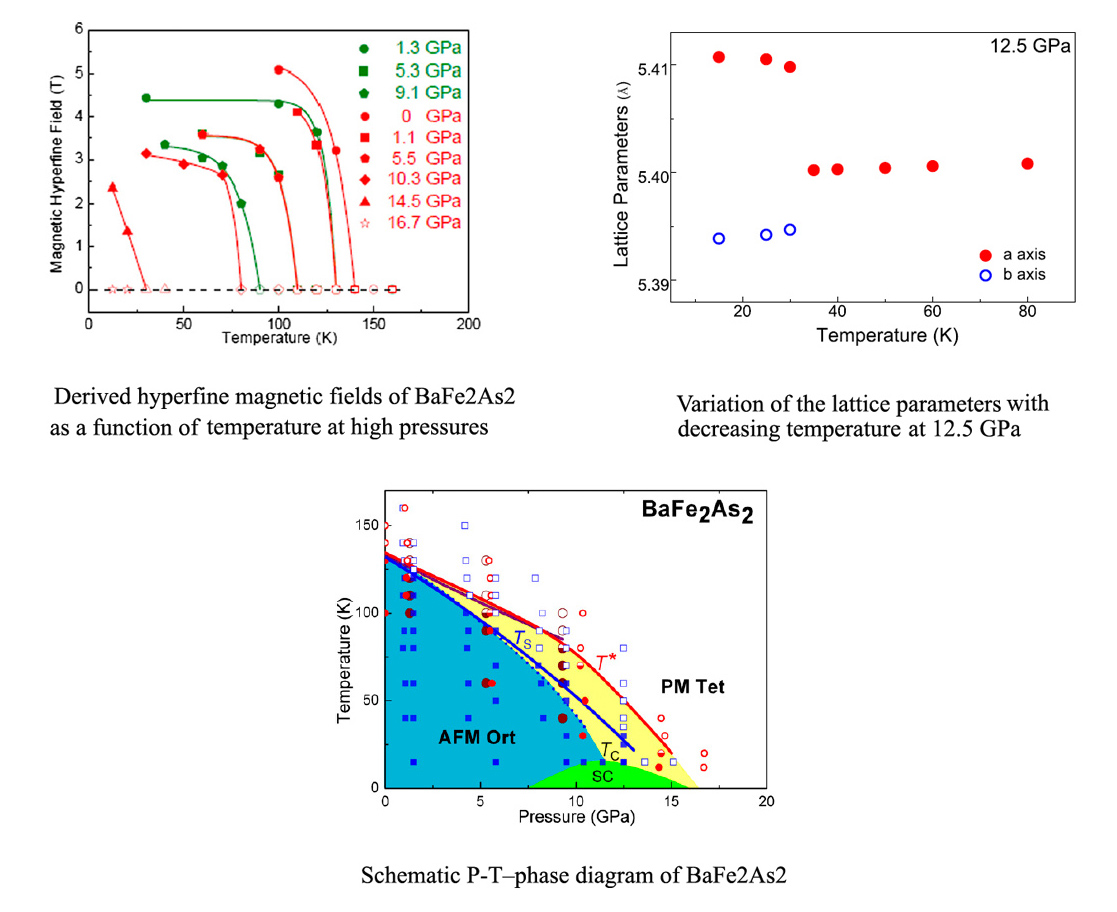压力调控BaFe2As2磁有序和结构演化
(Pressure-decoupled magnetic and structural transitions of the parent compound of iron-based 122 superconductors BaFe2As2)
J. J. Wu, J. F. Lin, X. C. Wang, Q. Q. Liu, J. L. Zhu, Y. M. Xiao, P. Chow, and C. Q. Jin
Proc Natl Acad Sci U S A/ PNAS 110, 17263 (2013)
Highlights: 中国科学院(CAS)、中科院物理所(IOP)
The recent discovery of iron ferropnictide superconductors has received intensive concern in connection with magnetically involved superconductors. Prominent features of ferropnictide superconductors are becoming apparent: the parent compounds exhibit an antiferromagnetic ordered spin density wave (SDW) state, the magnetic-phase transition is always accompanied by a crystal structural transition, and superconductivity can be induced by suppressing the SDW phase via either chemical doping or applied external pressure to the parent state. These features generated considerable interest in the interplay between magnetism and structure in chemically doped samples, showing crystal structure transitions always precede or coincide with magnetic transition. Pressure-tuned transition, on the other hand, would be more straightforward to superconducting mechanism studies because there are no disorder effects caused by chemical doping; however, remarkably little is known about the interplay in the parent compounds under controlled pressure due to the experimental challenge of in situ measuring both of magnetic and crystal structure evolution at high pressure and low temperatures. Here we show from combined synchrotron M?ssbauer and X-ray diffraction at high pressures that the magnetic ordering surprisingly precedes the structural transition at high pressures in the parent compound BaFe2As2, in sharp contrast to the chemical-doping case. The results can be well understood in terms of the spin fluctuations in the emerging nematic phase before the long-range magnetic order that sheds light on understanding how the parent compound evolves from a SDW state to a superconducting phase, a key scientific inquiry of iron-based superconductors.
